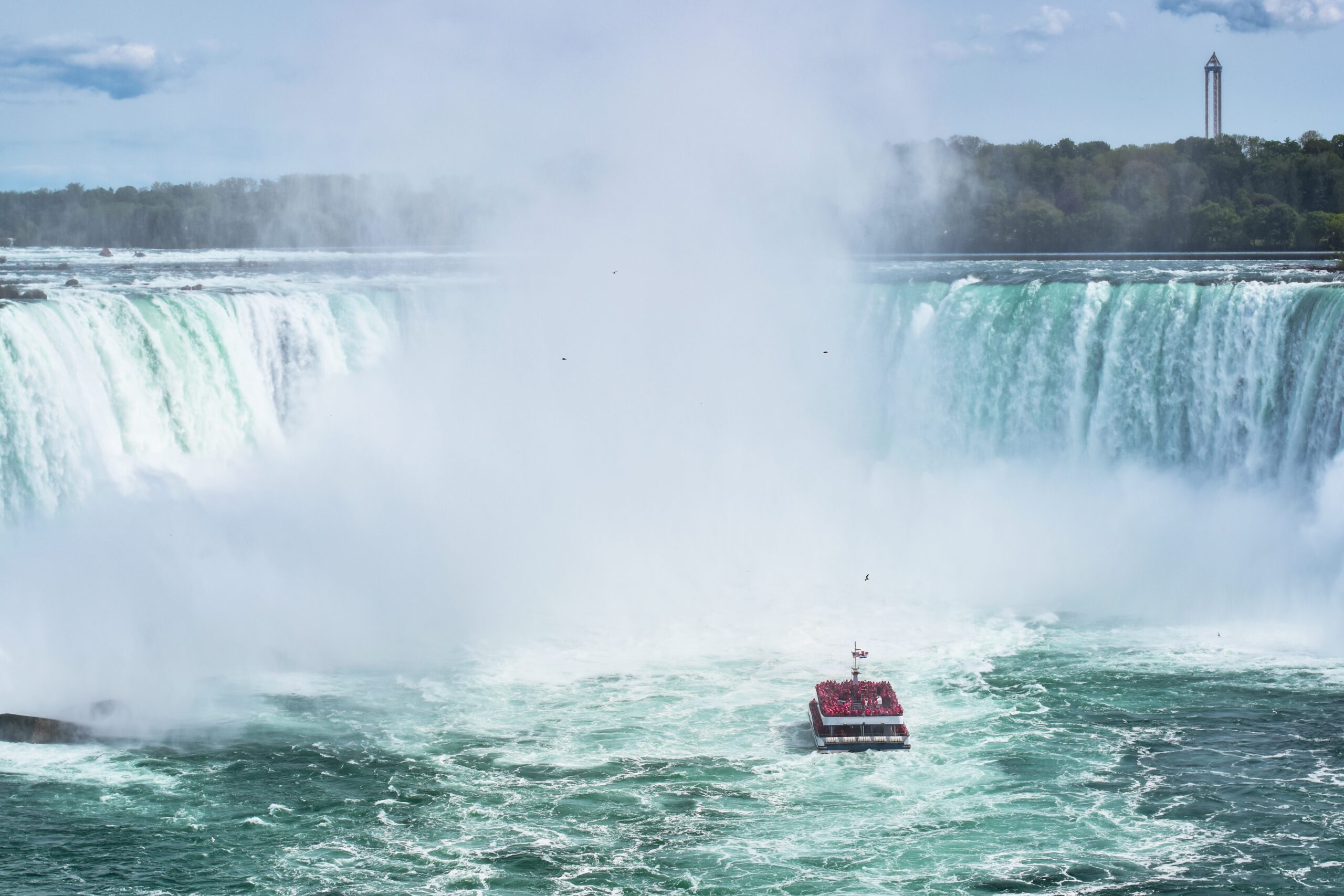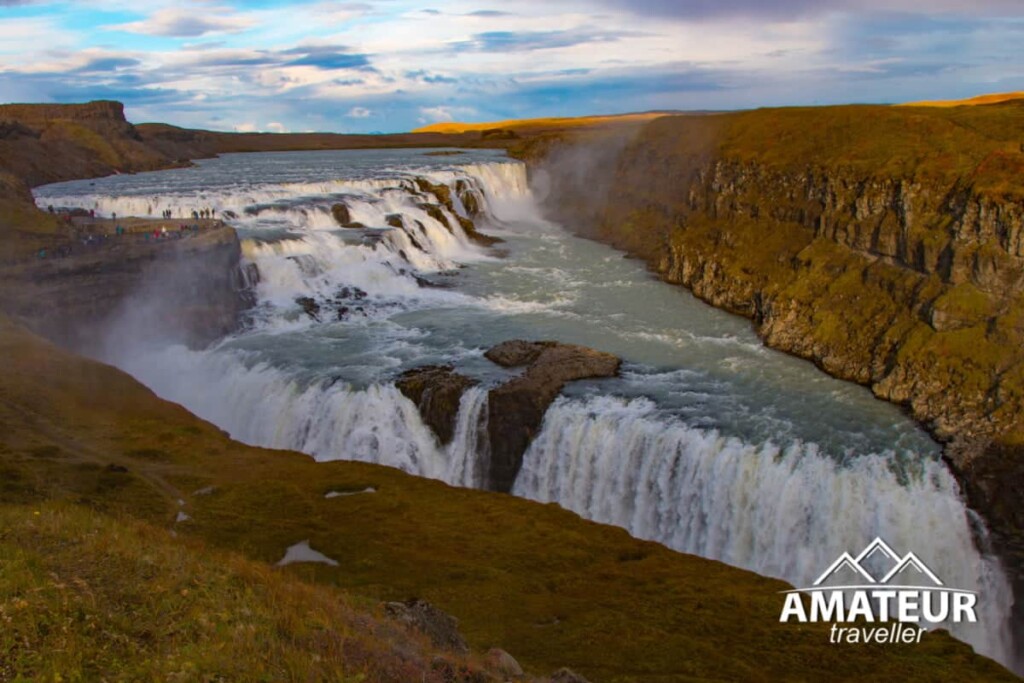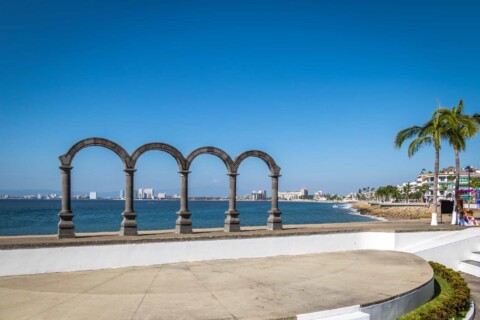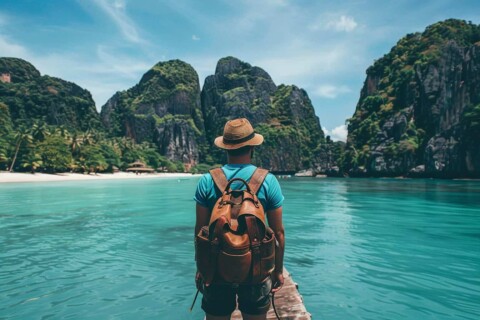
Chasing Waterfalls: 10 Breathtaking Cascades That Will Leave You Speechless
There’s something almost magical about standing before a waterfall. Maybe it’s the thunderous roar that vibrates through your chest, the cool mist that kisses your face, or the mesmerizing dance of water as it plunges toward the earth with unstoppable force. Whatever it is, waterfalls have been captivating travelers for centuries, serving as natural cathedrals where we can witness the raw, untamed power of our planet.
From towering giants that disappear into clouds to intimate cascades hidden in emerald forests, the world’s waterfalls offer some of the most spectacular experiences nature has to offer. They’re destinations that remind us why we travel – not just to see new places, but to feel something profound, to be humbled by forces far greater than ourselves.
Ready to embark on a journey to the world’s most extraordinary waterfalls? Pack your sense of wonder and prepare to get a little wet – these ten natural masterpieces are calling your name.
1. Niagara Falls, Canada/USA: The Thunder That Never Stops
Let’s start with the celebrity of the waterfall world. Niagara Falls isn’t just famous – it’s legendary. Straddling the border between Canada and the United States, this collection of three waterfalls has been drawing visitors since the 1800s, and for good reason.
The star of the show is Horseshoe Falls on the Canadian side, where an mind-boggling 12 million litres of water crash over the precipice every single minute. To put that in perspective, that’s enough water to fill an Olympic swimming pool in just over two minutes – continuously, all day, every day.
But here’s what makes Niagara special beyond the impressive statistics: it’s incredibly accessible. You can experience this natural wonder from multiple perspectives – walk along the rim, venture behind the falls through tunnels, or hop aboard the iconic Maid of the Mist boat tour (bring a raincoat!). The boat tour, in particular, is an experience that will stay with you forever. As you approach the base of the falls, the mist creates its own weather system, and the sound becomes so overwhelming that it drowns out everything else – including your own thoughts.
Winter visitors are in for a treat too. When temperatures drop, parts of the falls freeze into spectacular ice formations, creating a winter wonderland that looks like something from a fairy tale.
2. Angel Falls, Venezuela: Touching the Sky
If Niagara is the celebrity, then Angel Falls is the mysterious movie star who shuns the spotlight. Hidden deep in Venezuela’s Canaima National Park, this UNESCO World Heritage Site holds the title of world’s tallest waterfall at a staggering 979 meters – that’s nearly a full kilometer of free-falling water.
What makes Angel Falls truly special isn’t just its height, but its remote location and the adventure required to reach it. There are no roads here – you’ll need to fly in a small aircraft over the Venezuelan wilderness or embark on a multi-day riverboat journey. This inaccessibility has kept Angel Falls relatively pristine and adds an element of expedition to your visit.
The waterfall tumbles from a table mountain called Auyán-tepui (Devil’s Mountain), and during the dry season, much of the water actually evaporates before reaching the bottom, creating ethereal mist clouds that drift through the ancient landscape. Indigenous Pemon people consider this a sacred place, and once you see it for yourself, you’ll understand why.
The journey to Angel Falls is as memorable as the destination itself. You’ll fly over endless green canopy, camp under some of the clearest night skies on Earth, and experience a part of our planet that feels untouched by time.
3. Iguazu Falls, Argentina/Brazil: Nature’s Grand Theater
Imagine 275 individual waterfalls spread across nearly three kilometers of subtropical rainforest, all thundering in perfect, chaotic harmony. This is Iguazu Falls, and it’s nothing short of spectacular. Straddling the border between Argentina and Brazil, Iguazu (meaning “big water” in the local Guaraní language) offers one of the most immersive waterfall experiences on Earth.
The crown jewel is the Devil’s Throat, a U-shaped chasm where water plunges 82 meters with such force that the mist can be seen from space. But what sets Iguazu apart is the variety of ways you can experience it. Walk along elevated boardwalks that wind through the jungle, bringing you face-to-face with individual cascades. Take a boat tour that navigates right up to the base of the falls – prepare to get absolutely drenched and love every second of it.
The surrounding Iguazu National Park is a biodiversity hotspot, home to jaguars, toucans, coatis, and over 400 bird species. You might spot colorful butterflies dancing in the mist or hear the haunting call of howler monkeys echoing through the forest. This isn’t just about waterfalls – it’s about experiencing an entire ecosystem in its most vibrant form.
Pro tip: Visit both the Argentine and Brazilian sides. Argentina offers closer, more intimate views and extensive trail systems, while Brazil provides the perfect vantage point for panoramic photographs that capture the falls’ full majesty.
4. Victoria Falls, Zambia/Zimbabwe: The Smoke That Thunders
The local name says it all: Mosi-oa-Tunya, “the smoke that thunders.” Victoria Falls on the Zambezi River creates its own weather system, sending mist up to 500 meters into the air that can be seen from 50 kilometers away. This is raw power in its most magnificent form.
What makes Victoria Falls extraordinary is its width – at 1.7 kilometers across, it’s one of the widest waterfalls in the world. During peak flow season (March to May), an astounding 5 million litres of water per minute crash into the gorge below, creating a sound that truly does resemble thunder.
But Victoria Falls isn’t just about observation – it’s about participation. This is one of the world’s premier adventure destinations. You can bungee jump from the Victoria Falls Bridge (one of the highest commercial bungee jumps in the world), white-water raft through the gorge rapids, or take a helicopter ride for aerial views that will redefine your understanding of “spectacular.”
For a more serene experience, visit during the dry season (September to December) when water levels are lower, allowing you to walk to the edge of the falls on the Zambian side and peer directly into the abyss. The natural infinity pools that form at the edge – known as Devil’s Pool – offer swimming opportunities that are both terrifying and exhilarating.
The surrounding area teems with wildlife, so combine your waterfall visit with a safari in nearby national parks where elephants, lions, and hippos roam free.
5. Plitvice Lakes National Park, Croatia: A Fairy Tale Made Real
Croatia’s Plitvice Lakes feel like they were designed by a team of fairy tale illustrators working overtime. This UNESCO World Heritage Site features 16 terraced lakes connected by a series of waterfalls, all set in a landscape so pristine it seems almost artificial.
The star attraction is Veliki Slap (Big Waterfall), Croatia’s tallest waterfall at 78 meters. But the real magic happens as you walk the wooden boardwalks that wind between the lakes. The water here displays an incredible range of colors – from azure and green to gray and blue – depending on the mineral content and the angle of the light.
What makes Plitvice unique is its constantly changing nature. The waterfalls are actually created by natural dams of travertine (calcium carbonate deposits), which continue to grow and evolve. The lakes and waterfalls you see today won’t look exactly the same in a hundred years – nature is literally redesigning this landscape in real-time.
Visit in different seasons for completely different experiences. Spring brings wildflowers and rushing water from snowmelt. Summer offers lush green forests and perfect hiking weather. Autumn paints the surrounding beech and fir forests in brilliant reds and golds, creating mirror-like reflections in the still lakes. Winter transforms the falls into frozen sculptures that glisten like crystal in the cold sunlight.
The park’s boardwalk system makes it accessible to most fitness levels, but arrive early or late in the day to avoid crowds and experience the mystical quality that makes this place feel like a secret corner of paradise.
6. Yosemite Falls, United States: A California Giant
Rising nearly 740 meters from the floor of Yosemite Valley, Yosemite Falls commands attention from the moment you enter this iconic California national park. This isn’t just one waterfall – it’s actually three tiers working together to create one of North America’s tallest waterfalls.
The upper fall drops 436 meters, the middle cascades tumble another 206 meters, and the lower fall adds a final 98 meters. But these numbers don’t capture the emotional impact of seeing this giant framed by Yosemite’s granite cliffs and ancient sequoia groves.
Spring is the magic season here. As Sierra Nevada snow melts, Yosemite Falls roars to life with such volume that you can hear it throughout the valley. The water crashes with such force that it creates its own wind patterns, and rainbows frequently arc through the mist on sunny afternoons.
For the adventurous, the hike to the top of Yosemite Falls is challenging but rewarding – 11.5 kilometers round trip with significant elevation gain. The payoff? Standing at the precipice where all that water begins its journey, with panoramic views of the High Sierra stretching to the horizon.
Even if you’re not up for the full hike, the easier walk to the base of the lower fall offers incredible views and photo opportunities. Pack a picnic and spend the day in this natural amphitheater, watching rock climbers scale the valley walls while the waterfall provides a constant, soothing soundtrack.
7. Gullfoss, Iceland: Golden Falls in the Land of Fire and Ice
Iceland’s Gullfoss, or “Golden Falls,” perfectly embodies the dramatic beauty of this Nordic island. Located on the Hvítá River in southwestern Iceland, this two-tiered waterfall plunges 32 meters into a rugged canyon that seems to swallow the water whole.
The “golden” name comes from the golden hue that often appears in the glacial sediment-laden water, especially when sunlight hits the mist just right. But Gullfoss offers different magic in every season. Summer brings the midnight sun, allowing for 24-hour waterfall viewing under ever-changing light. Winter often partially freezes the falls, creating ice sculptures that look like they belong in Elsa’s palace from Frozen.
Gullfoss is part of Iceland’s famous Golden Circle tourist route, making it easily accessible from Reykjavik. But don’t let its popularity fool you into thinking it’s somehow diminished – the raw power of glacial water carving through ancient volcanic rock is humbling no matter how many other people are sharing the experience.
The viewing platforms bring you close enough to feel the spray, and on windy days (which is most days in Iceland), you might get soaked by the mist. Dress appropriately and embrace it – getting drenched by an Icelandic waterfall is a badge of honor.
Combine your visit with nearby Geysir hot springs and Þingvellir National Park for a full day of experiencing Iceland’s geological wonders. And if you visit in winter, keep your eyes on the sky – the northern lights often dance above Gullfoss on clear nights.
8. Sutherland Falls, New Zealand: Hidden Gem of Fiordland
Deep in New Zealand’s South Island wilderness, Sutherland Falls drops 580 meters in three distinct tiers through pristine temperate rainforest. This is remote New Zealand at its finest – a place where the only sounds are falling water, native birds, and your own footsteps on the forest floor.
Getting to Sutherland Falls is half the adventure. You can hike the famous Milford Track, one of the world’s great walks, which takes four days through some of the most spectacular scenery on Earth. Alternatively, scenic helicopter flights offer aerial views of the falls and the surrounding fiordlands that are simply breathtaking.
What makes Sutherland Falls special is its pristine setting. This isn’t a waterfall surrounded by viewing platforms and gift shops – it’s a waterfall in one of the last great wildernesses, where native beech forests stretch unbroken to snow-capped peaks and the air smells of moss and rain.
The water originates from Lake Quill, suspended high in the mountains above. During heavy rains (which are frequent in Fiordland), the falls become even more dramatic, with additional temporary waterfalls appearing on the cliff faces.
If you’re not up for multi-day hiking, shorter helicopter tours from Queenstown or Te Anau offer stunning aerial perspectives. The flight itself is an adventure, weaving between mountain peaks and over pristine lakes that mirror the sky.
9. Kaieteur Falls, Guyana: The Hidden Giant
Hidden in the heart of Guyana’s pristine rainforest, Kaieteur Falls is one of the world’s best-kept secrets. This single-drop waterfall plunges 226 meters – five times taller than Niagara – yet remains relatively unknown to international travelers.
What makes Kaieteur extraordinary is its volume combined with height. It’s the world’s largest single-drop waterfall by volume of water, with the Potaro River launching over the cliff with tremendous force year-round. The surrounding Kaieteur National Park protects 627 square kilometers of pristine Guiana Shield forest, one of the oldest geological formations on Earth.
Getting here requires a small aircraft flight from Georgetown, Guyana’s capital, over endless green canopy broken only by rivers that twist like silver ribbons. The remoteness means you might have this natural wonder almost to yourself – a rare experience in our connected world.
The area is also famous for the tiny golden frog (Brachycephalus didactylus) found nowhere else on Earth, and if you’re lucky, you might spot the rare Guianan cock-of-the-rock, one of South America’s most spectacular birds.
This is eco-tourism at its purest – minimal infrastructure, maximum natural impact. You’ll need to be comfortable with basic facilities and unpredictable weather, but the reward is experiencing one of our planet’s most powerful waterfalls in complete wilderness.
10. Detian Falls, China/Vietnam: A Cross-Border Marvel
Our journey ends at the magnificent Detian Falls, where China meets Vietnam in a display of natural diplomacy. This tiered waterfall system spans the border between the two countries, with water cascading over limestone cliffs in a series of pools and drops that extend for over 200 meters.
What makes Detian Falls unique is its setting in karst landscape – ancient limestone formations that create a tropical paradise of emerald pools, bamboo groves, and misty valleys. The falls are at their most spectacular during the wet season (May to September) when multiple tiers flow simultaneously.
You can experience the falls from both countries, and each side offers different perspectives. The Chinese side provides elevated viewing platforms and boat rides that take you close to the base, while the Vietnamese side (where it’s called Ban Gioc Falls) offers more intimate encounters with individual cascades.
The border setting adds cultural richness to natural beauty. Local markets sell everything from fresh dragon fruit to traditional textiles, and the mix of Chinese and Vietnamese influences creates a unique cultural experience alongside the natural wonder.
Why Waterfalls Call to Us
As we wrap up this journey around the world’s most spectacular waterfalls, it’s worth pondering why these natural phenomena captivate us so deeply. Perhaps it’s because waterfalls represent everything we love about travel – they’re powerful yet peaceful, accessible yet wild, constant yet ever-changing.
Each of these ten waterfalls offers more than just a photo opportunity (though you’ll take hundreds). They provide moments of genuine awe, reminders of our planet’s incredible beauty, and experiences that connect us to something larger than our daily lives.
Whether you’re drawn to the thunderous power of Victoria Falls, the mystical beauty of Plitvice Lakes, or the remote wilderness of Angel Falls, there’s a waterfall somewhere in the world calling your name. The only question is: which one will you answer first?
So pack your waterproof camera, bring a sense of adventure, and prepare to get a little wet. These natural cathedrals are waiting, and trust us – the memories will last a lifetime.








